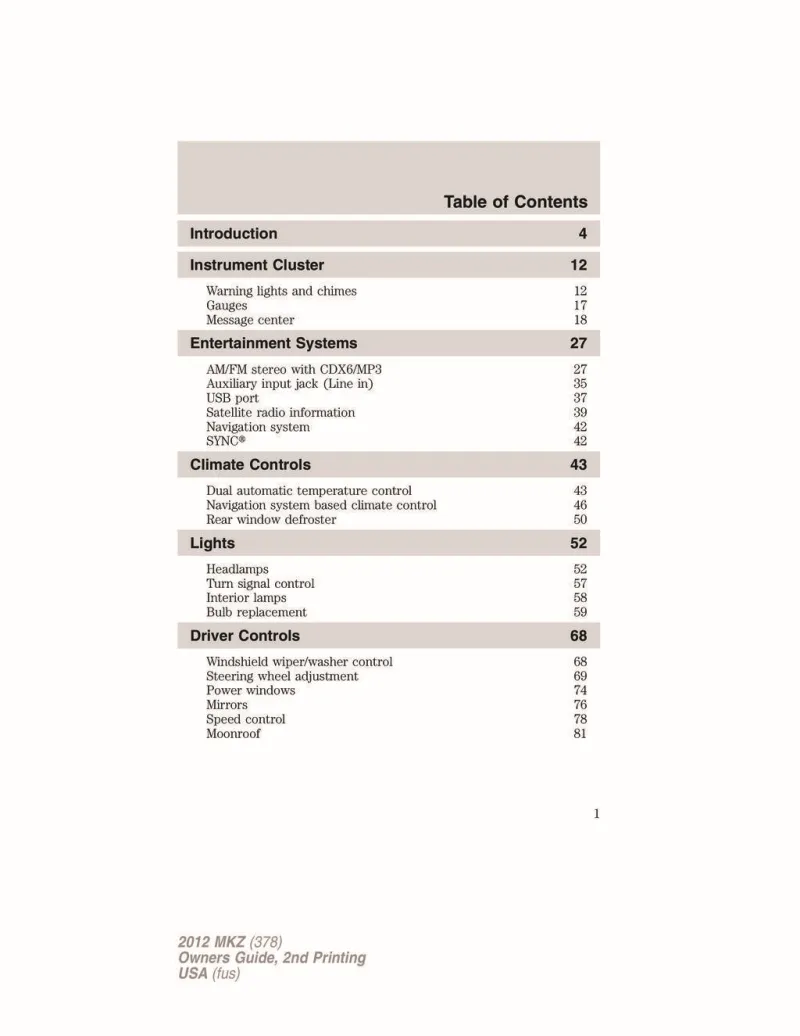2012 Lincoln Mkz Owner's Manual

Table of Contents
2012 Lincoln Mkz Overview
Introduction
The 2012 Lincoln MKZ is a luxury midsize sedan that epitomizes sophistication and comfort. As part of Lincoln's esteemed lineup, the MKZ offers a serene driving experience coupled with an elegant design. It is tailored for those who seek a blend of performance and refinement, making it an appealing choice for discerning drivers looking to enter the realm of luxury automobiles.
Powertrains
The 2012 MKZ is equipped with a robust and efficient powertrain lineup. Buyers can choose between a 3.5-liter V6 engine that produces 263 horsepower and 249 lb-ft of torque, coupled with a six-speed automatic transmission. For those looking for enhanced fuel efficiency, there is also a hybrid variant that combines a 2.5-liter four-cylinder engine with an electric motor to achieve a remarkable EPA rating of 41 mpg city and 36 mpg highway. This dynamic engine combination ensures a smooth and responsive driving experience while maintaining impressive fuel economy.
Trims
The 2012 Lincoln MKZ is available in three well-appointed trims: base MKZ, MKZ with the Luxury package, and the MKZ Hybrid. Each trim offers a unique set of features and finishes that elevate the vehicle’s value, from premium leather seating and high-quality materials used throughout the cabin to advanced technology options that enhance both comfort and convenience.
Features
The MKZ is generously outfitted with an array of cutting-edge features, including a premium sound system, a navigation system, and advanced safety measures such as stability control and multiple airbags. Additional luxuries include heated and cooled front seats, dual-zone climate control, and an intuitive infotainment system, all designed to create an inviting and technologically sophisticated driving environment.
Owners Manual
The 2012 Lincoln MKZ comes with a comprehensive owner's manual that provides insightful information on vehicle operation, maintenance, and troubleshooting. This manual serves as an essential resource for owners, ensuring they can fully understand and utilize all the features and benefits of their luxury sedan. With clear guidelines and tips, it helps maintain the MKZ’s performance and longevity for years to come.
User manual download
The Lincoln Mkz owner manual for the 2012 model year is to be found in PDF downloadable format on this page. The owner manual for the model year 2012 is free and in English, but the repair manuals are usually not easy to get and may cost more.
Manual Questions
Fill the form below and someone will help you!

